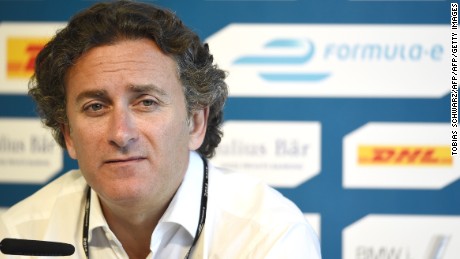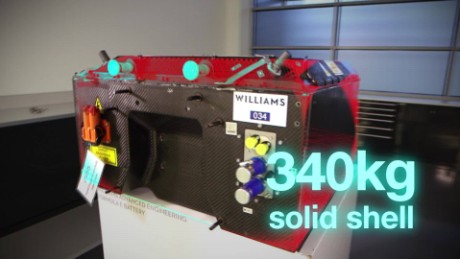Story highlights
- Formula E gears up for third season
- Hong Kong hosting first race
- Formula E cars top speed is 140mph
(CNN)A quiet storm is brewing in the world of motorsport -- a race series unlike any other is generating a buzz in some of the world's best-loved cities.
This weekend sees the start of season three of the Formula E World Championship, a competition exclusively for battery-powered electric cars.
The steepling backdrop of Hong Kong's skyline is the spectacular setting for this year's curtain-raiser with 10 teams and 20 drivers battling it out on the streets around the Central Harborfront -- a route usually jam-packed with cars and choking pollution.
CNN's Supercharged show will be following all the twists and turns of what promises to be another enthralling Formula E season as well as examining the efforts to bring electric mobility to cities all over the world.
Here are five things to know about motorsport's most talked about formula.
City slickers
Formula One boasts three street tracks including the Monaco circuit, but anything Lewis Hamilton and Co. can do, so can Formula E.
This season, electric racing returns to the Principality -- on an abridged 1.75-kilometer (one mile) version of the historic F1 circuit -- after a year away, with a further nine city tracks on the calendar including Paris, New York and Marrakesh.
"Street tracks are in the DNA of the championship," says Renault e.Dams driver and reigning world champion, Sebastien Buemi told the official Formula E website.
They are also the ultimate test of a racing driver's skills -- bumpy, narrow and with no margin for error.
"Everyone loves a street track ŌĆö it takes something extra," says DS Virgin Racing's Sam Bird. "You make a mistake, you're in the wall."
Fast and furious
Unlike Formula One where practice, qualifying and race extend over three days, Formula E manages to cram all its action -- two practice sessions, qualifying and race -- into one breathless day.
The fast-paced schedule lends itself to the modern mores of sports fans brought up on the 24/7 bite-sized world of social media.
Formula E organizers have been quick to embrace digital platforms from the start, running slick marketing campaigns around races and inviting fans to get involved.
The "Fan Boost" feature which runs in the build up to and during races gives fans a chance to vote for their favorite driver, with the winner of the online poll receiving an extra shot of power during races.
This online fostering of fans mirrors the sense of intimacy of city center racing.
"I think it's the beating heart of Formula E that the fans can get so close," Virgin Racing's Sam Bird told the official Formula E website.
"Watching the cars whistle past one inch away from the wall is fairly spectacular."
Green goals
Competitive racing is at the center of Formula E but so too is sustainability -- one of the sport's founding principles is to encourage the uptake of cleaner, more renewable energy in major cities.
"What we want is to encourage the younger generation to move to electric cars," Alejandro Agag, Formula E CEO told CNN last year.
"If we achieve that, this will be major for everyone -- cleaner air, less pollution -- we will have a better world effectively."
'Pioneering tech'
Formula E cars have a top speed of 140mph (225 kph) generated by 28kWh batteries.
Each 340-kilo power unit contains 150 lithium ion cells -- roughly equivalent to the power output of 10,000 AA batteries -- supplied by Williams Advanced Engineering -- the R&D arm of nine-time F1 world champions, Williams.
"I don't think people can overestimate how new this technology is," explains Gary Ekerold, operations manager at Williams Advanced Engineering.
"Powering racing cars at this type of speed is proper pioneering technology."
At present, Formula E drivers have to use two cars during a race -- hopping out of one mid-race to switch to a fully-charged replacement. But technology is developing fast, and, by season five, batteries are expected to last a full race with Williams' F1 rivals McLaren slated to provide the technology.
Wacky Races
If F1 races can sometimes feel like a high-speed procession, Formula E is refreshingly unpredictable -- "Bumper cars at 100mph," as Formula E race commentator Jack Nicholls neatly puts it.
From the first-ever ePrix in Beijing, which saw Nick Heidfeld suffer a spectacular final-lap crash to championship rivals Sebastien Buemi and Lucas di Grassi colliding at the season two finale in London, Formula E is always fiercely contested and never dull.
Racing around city centers in pioneering electric cars could just be the perfect formula for the future of motorsport in the 21st century.












